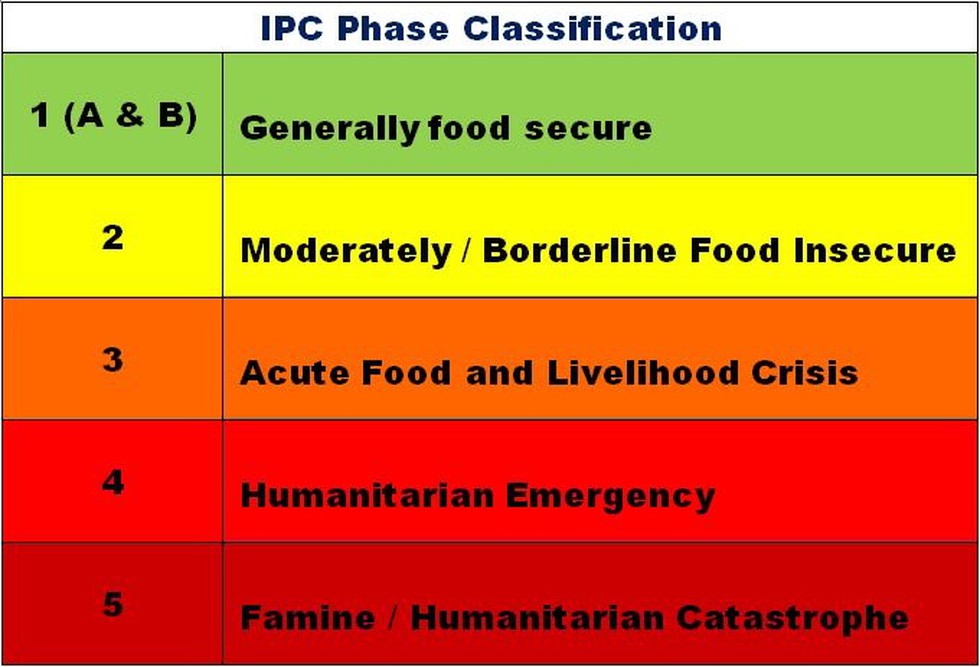IPC scale
- The Integrated Food Security Phase Classification (IPC), also known as IPC scale, is a tool for improving food security analysis and decision-making.
- It is a standardised scale that integrates food security, nutrition and livelihood information into a statement about the nature and severity of a crisis and implications for strategic response.
- The IPC was originally developed for use in Somalia by the United Nations Food and Agriculture Organization's Food Security Analysis Unit (FSAU).
IPC scale: The following table includes a summary of the IPC scale -
- Phase 1: Generally Food Secure (More than 80% of households can meet basic food needs without atypical coping strategies)
- Phase 2: Borderline Food Insecure (For at least 20 percent of households, food consumption is reduced but is minimally adequate)
- Phase 3: Acute Food and Livelihood Crisis (At least 20 percent of households have significant food consumption gaps. Levels of acute malnutrition are high and above normal)
- Phase 4: Humanitarian Emergency (At least 20 percent of households face extreme food consumption gaps, resulting in very high levels of acute malnutrition and excess mortality)
- Phase 5: Famine/Humanitarian Catastrophe (At least 20 percent of households face a complete lack of food and/or other basic needs and starvation, death, and destitution are evident; and acute malnutrition prevalence exceeds 30%; and mortality rates exceed 2/10000/day)
